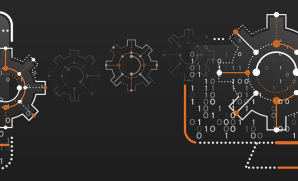Optimize Operations with Accurate Demand Forecasting: The Power of DSCP
Publish Date: June 10, 2024Optimizing operations in today’s fast-paced business environment is crucial to maintaining a competitive edge. One of the most significant aspects of operational efficiency is accurate demand forecasting, particularly in demand planning (DSCP – Demand Planning). Demand forecasting tools help businesses navigate the complexities of fluctuating demand, ensuring inventory is managed effectively and costs are minimized. This blog delves into the importance of accurate demand forecasting, the challenges involved, and the best practices and strategies to optimize operations.
Why Does the Accuracy of Demand Planning Matter?
Accurate demand planning is essential for several reasons. Firstly, it directly impacts inventory management. A reliable demand forecasting system can prevent the costly issues of over- or under-ordering raw materials and goods. Over-ordering can lead to excess inventory, which ties up capital and increases storage costs, while under-ordering can result in stockouts and lost sales opportunities.
Moreover, even minor forecast inaccuracies can lead to significant financial losses in a high-stakes business environment. Traditional forecasting methods, such as legacy ERP systems and Excel spreadsheets, are often inadequate for handling the vast data necessary for accurate predictions. These tools can’t capture the opportunities big data presents, leading to inefficiencies and potential errors.
Accurate data is the lifeblood of reliable forecasting models. However, data inaccuracy and availability pose significant challenges. Without accurate historical data, forecasting becomes guesswork. Let’s explore these challenges.
Challenges in Demand Forecasting
- Incorporating Seasonal and Cyclical Patterns: Many products and services experience seasonal and cyclical demand fluctuations. Accurate demand forecasting must account for these variations through techniques like seasonal indexing and cyclical analysis. This ensures that forecasts reflect real-world demand patterns, leading to better inventory management and cost efficiency.
- Managing New and Evolving Products: Introducing new products and changes to existing ones add complexity to demand forecasting. Businesses can use proxy data or pilot studies to estimate demand for new products and gradually phase out forecasts for discontinued items while closely monitoring their performance. Staying informed about industry trends and technological advancements is essential for keeping forecasting models relevant in fast-evolving industries.
- Addressing Product Life Cycle Stages: Product life cycles disrupt established forecasting models, including the launch of new products and the phase-out of older ones. Businesses must adjust their forecasts to accommodate these stages by ramping forecasts for new products and winding down those for older ones, ensuring that inventory levels align with actual demand.
However, businesses can mitigate these issues by implementing robust data governance practices, conducting regular data audits, and using data enrichment techniques to ensure data reliability.
Best Practices and Strategies for Accurate Demand Forecasting
Businesses should employ quantitative and qualitative methods tailored to specific situations to enhance demand forecasting accuracy. Regularly reviewing and updating forecasting models is essential, as is fostering collaboration between sales, marketing, and supply management teams to gain comprehensive insights.
Integrating External Factors: Incorporating external factors such as economic trends, market dynamics, and weather patterns into forecasting models can further refine predictions. Leveraging advanced analytics, artificial intelligence (AI), and machine learning (ML) technologies enables businesses to create more precise and adaptable forecasts.
Understanding Model Limitations: No forecasting model is infallible. Recognizing forecasting models’ limitations and incorporating buffers or safety stock to account for potential inaccuracies can prevent disruptions in the supply chain.
Promoting Data Literacy and Workforce Training: It is essential to cultivate data literacy across the organization and invest in training to use advanced forecasting tools. Employees should be proficient in interpreting the outputs of these tools to make informed decisions.
Developing Agile and Flexible Processes: Creating agile and flexible business processes allows companies to quickly adapt to new information and changing market conditions. This agility includes the capability to scale operations up or down based on real-time demand insights.
Fostering Collaboration: Strong collaboration with all stakeholders in the supply chain is vital. Sharing information and insights leads to more accurate and comprehensive forecasts, benefiting the entire supply chain ecosystem.
Embracing Technological Innovations: Investing in the latest forecasting technologies and tools is crucial for staying ahead of the competition. These tools provide enhanced data processing capabilities and sophisticated algorithms that improve forecast accuracy.
However, finding the right partner to harness these advanced technologies is crucial, and YASH Technologies stands out as the ideal choice.
Empowering Manufacturers: Exceptional QAD ERP Solutions by YASH Technologies
YASH delivers outstanding QAD ERP Advisory-Implemtation-Rollout-Managed services precisely tailored to meet the evolving needs of manufacturers. Our QAD SMEs, domain experts, and consulting professionals are adept at understanding organizations’ diverse needs and aligning processes and systems to suit them. Our customers have experienced significant efficiency boosts, gained agility, reduced costs, and minimized supply chain and operational challenges by leveraging the purpose-led QAD solutions we architected for them.
With extensive experience across automotive, consumer products, health sciences, and food and beverage industries, YASH has consistently provided significant value to customers through industry-specific QAD enablers. To know more, connect with us at info@yash.com
















